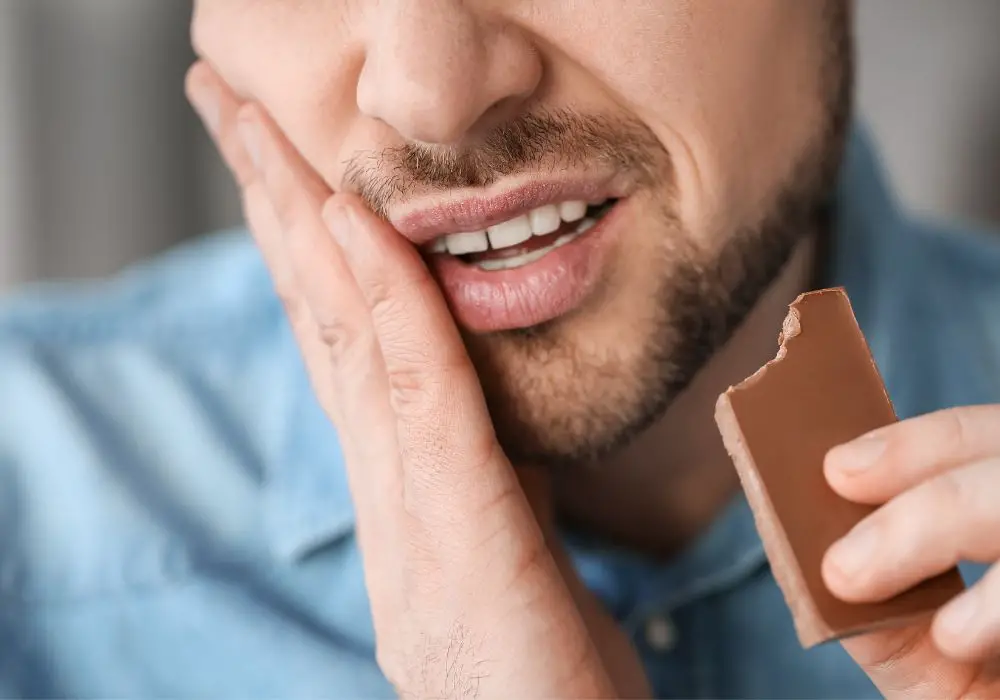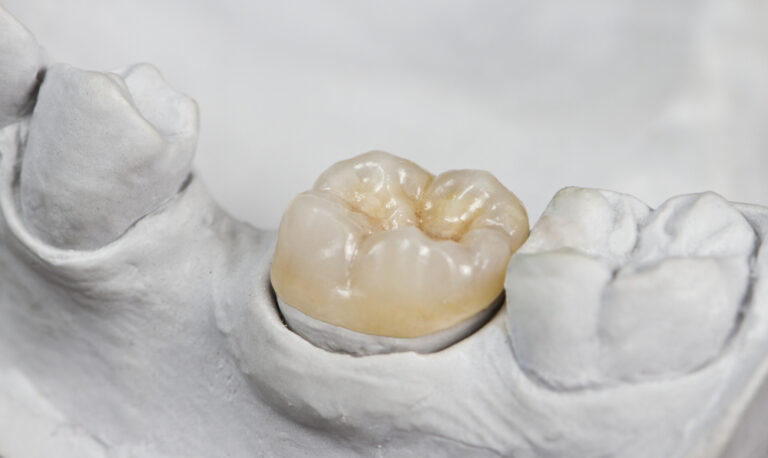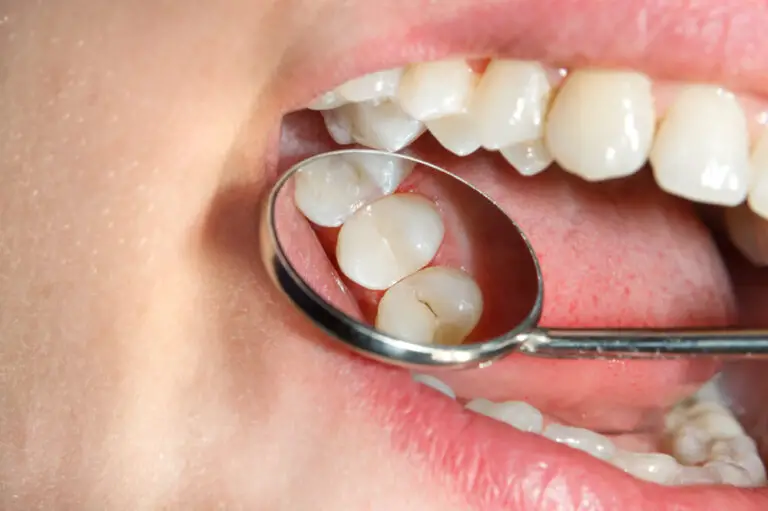Many people experience tooth sensitivity or pain when eating cold, hot, sugary or acidic foods, even though their teeth appear healthy and cavity-free upon examination. This condition is known as dentin hypersensitivity and can be perplexing and frustrating for those who experience it. In this comprehensive article, we’ll take an in-depth look at the causes, diagnosis, and treatments for sensitive teeth without cavities.
What is dentin and how is it related to tooth sensitivity?
Teeth have a complex structure composed of different layers and tissues. The outermost visible layer is the enamel, which is the hardest substance in the human body. Underneath the enamel lies the dentin, which makes up the bulk of each tooth.
Dentin is a bone-like tissue filled with thousands of microscopic tubular structures called dentinal tubules. These tubules are fluid-filled channels that radiate outward from the tooth’s inner nerve center, called the pulp. The pulp contains nerves and blood vessels that supply the tooth with sensory innervation and nutrients.
When the dentin tubules are exposed, either from gum recession or loss of protective enamel, external stimuli like cold, heat, sugar, or acid can diffuse into the tubules. This creates a rapid pressure change within the tubule fluid that activates sensory receptors called mechanoreceptors which are located on the walls of the dentinal tubules. The mechanoreceptors then transmit pain signals along the nerve fibers to the brain, resulting in uncomfortable tooth sensitivity.
What causes dentin hypersensitivity?
There are several potential ways dentin can become exposed and hypersensitive:
Gingival recession
The most common cause of sensitivity is gingival recession, which is when the gums pull away from the teeth. This exposes the softer dentin underneath.
Gum recession can result from periodontal disease, aggressive brushing, genetic factors, smoking, and normal aging. As we get older, gums naturally recede and provide less coverage. Any gum recession of 1 millimeter or more can lead to hypersensitivity.
Loss of enamel
Tooth enamel naturally erodes over time from everyday activities like chewing as well as consuming acidic foods and drinks. Acidic foods like citrus fruit, carbonated beverages, and even yogurt contain acids that can dissolve enamel overtime.
Once enamel wears away, the sensitive dentin underneath becomes exposed and unprotected. Factors like bulimia, acid reflux disease, teeth grinding, and overly zealous brushing can speed up enamel loss.
Cracks and chips
Cracks or chips in the enamel that extend into the dentin layer can trigger sensitivity. Clenching and grinding teeth places excessive force on teeth and commonly causes cracks to form.
Orthodontic treatment
Teeth may become hypersensitive for a period after orthodontic work like braces or teeth whitening procedures. The mechanics of moving teeth and use of acidic whitening gels can both contribute to temporary enamel reduction and dentin exposure.
Other causes
Rare causes include toothbrush abrasion that wears down enamel over time or a cusp fracture where a piece of tooth breaks off, allowing dentin exposure. Repeated exposure to acid can also destroy enamel and lead to sensitivity.
Why do sweets and acids cause pain in sensitive teeth?

Sugary and acidic foods are perfect irritants for the exposed dentin and cause temporary zings of sensitivity pain. Here’s why:
- Sugar and acid activate the mechanoreceptors found on the walls of the dentin tubules. The tubules act like little antennae that detect pressure changes. The sweet and acidic foods change osmotic pressure, triggering these receptors to fire off pain signals.
- Sugary foods like candy, soda, or desserts have high adhesive qualities, so they “stick” to teeth longer, allowing a prolonged activation of the mechanoreceptors in the tubules.
- Bacteria on the teeth feed on residual sugars and release acids as a byproduct. These acids lead to demineralization of enamel over time, allowing more dentin exposure. But in the short term, they also enhance activation of the pain receptors.
So sweets and acid create a sort of “triple threat” of stimulating the mechanoreceptors through osmotic changes, sticking to the teeth longer, and releasing bacteria acids. No wonder they cause such bothersome sensitivity flare-ups!
How is dentin hypersensitivity diagnosed?
If you experience recurring sensitivity when eating hot, cold, sweet or acidic foods, schedule an exam with your dentist. Accurately diagnosing dentin hypersensitivity involves:
- A visual exam checking for signs of exposed dentin, gum recession, cracks, and enamel loss
- Gently tapping on teeth with a dental instrument to pinpoint specific sensitive spots
- Having you drink cold water to identify which teeth hurt
- Testing with airflow and vibration devices to check if sensitivity is provoked
- Complete radiographs to check for dental decay or other problems
- A review of your oral hygiene and diet habits
After other potential causes like cavities, cracked teeth, or gum disease are ruled out, your sensitivity can be attributed to exposed dentin tubules. The triggers, location, and character of the pain help confirm diagnosis. Your dentist may even examine under magnification to visualize exposed tubule openings.
Treatment options to reduce dentin hypersensitivity
The good news is dentin hypersensitivity can be successfully managed with several effective treatment approaches:
Desensitizing toothpaste
Specialized toothpastes contain active ingredients like stannous fluoride, arginine, or potassium nitrate that work by partially plugging and sealing off the openings of dentin tubules. This makes them less permeable and reduces the degree of nerve stimulation.
Using a desensitizing toothpaste twice daily provides progressive relief over 2-8 weeks as more tubules become occluded. However, consistency is key for the cumulative benefits.
In-office fluoride treatments
Professionally applied fluoride gel or varnish forms a protective barrier over exposed dentin. The fluoride ions soak into the tubules and make nerve sensations less amplified. The barrier lasts for several months before needing reapplication.
Dental sealants
Dental sealants help immediately shield areas of exposed dentin from contact with foods and liquids. The dentist applies the plastic resin material directly onto the vulnerable surfaces. Sealants provide instant sensitivity relief, but may need periodic replacement as they can wear over time.
Gum grafting surgery
Gum grafting surgery can cover areas of gum recession with a flap of tissue grafted from the roof of the mouth or other sites. This permanently resolves sensitivity in many cases by protecting the root surfaces again. Grafting provides a lasting fix for those with prominent gum recession.
Nerve desensitization
If other approaches prove ineffective, the dentist may try coating the inner tooth pulp with agents like silver nitrate or potassium oxalate to calm pain signals transmitted to the nerve. This chemically desensitizes the nerve’s ability to react to stimuli for a period of weeks to months.
Can sensitive teeth be prevented?

While everyone’s teeth undergo natural wear and aging, there are some ways to minimize enamel loss and gum recession that contributes to sensitivity:
- Maintain excellent oral hygiene to prevent gum disease a leading cause of recession. Brush gently with soft bristle brush.
- Use mouthguard if you grind your teeth at night to prevent cracked teeth and worn enamel.
- Monitor acidic food/drink intake like citrus, carbonated beverages, vinegar, and alcohol which can dissolve enamel over time.
- Quit smoking, as this exacerbates gum recession and bone loss from oral disease.
- Have regular cleanings to remove plaque before it causes gum damage and recession.
Following these simple precautions can help preserve enamel integrity and gum health for less dentin exposure. Pay attention to any spots of sensitivity early and avoid trigger foods while treating it. With proper care, sensitive teeth can be managed for the long run.
Frequently Asked Questions about Sensitive Teeth
Why are my teeth sensitive to cold but not hot foods?
Cold sensitivity is most common with dentin hypersensitivity. Cold foods or liquids cause fluid within the dentin tubules to rapidly contract and flow, activating the pain receptors more readily than heat does. Hot foods provoke nerve responses too, but typically aren’t as painful.
Is sensitive teeth an early sign of other problems?
It can sometimes indicate issues like dental decay or cracked teeth. But if your dentist thoroughly examines you and finds no other problems, the sensitivity likely stems from exposed dentin tubules. Either way, it’s smart to get evaluated to identify the cause and proper treatment.
Is it possible for sensitivity to suddenly develop overnight?
Sensitivity typically develops gradually, but people occasionally report sudden onset after dental procedures. Clenching or grinding can also lead to small fractures, chipping enamel and abruptly exposing dentin. See your dentist promptly if you notice a spike in sensitivity overnight to address the cause.
I don’t have any cavities, so why are my teeth still sensitive?
Cavities are not the only cause of sensitivity. Even with healthy teeth, you can experience sensitivity from factors like eroded enamel, gum recession, cracked teeth, or whitening treatments without a single cavity. The dentin underneath becomes exposed, causing pain from hot, cold, or acidic foods.
Can I whiten my teeth if I have sensitivity?
You may be able to whiten carefully using lower concentrations of peroxide if you work closely with your dentist. They can help choose options to minimize sensitivity, may recommend desensitizing pretreatment, and can supply coping tips like more frequent gel rinsing during the process. Moderate whitening is usually possible with some precautions.







